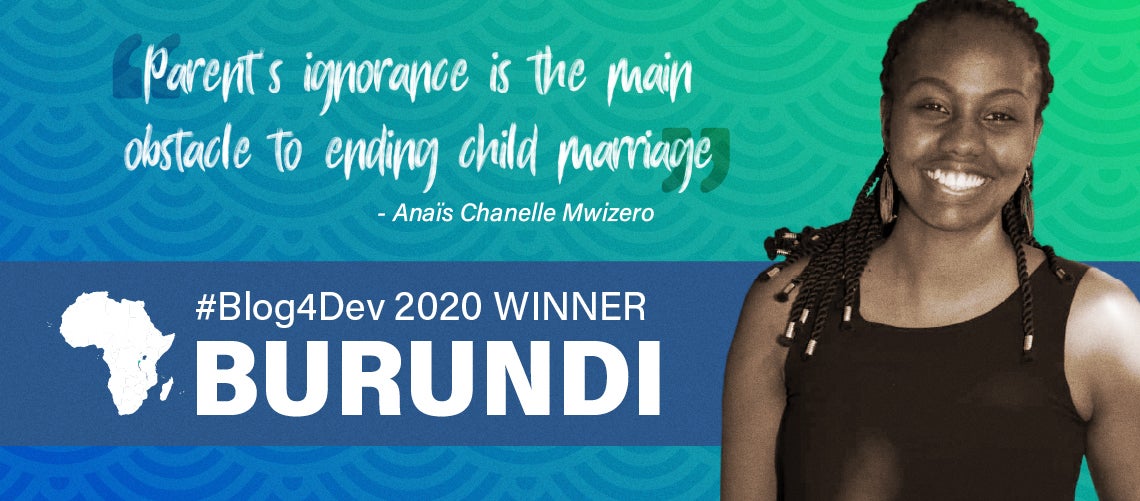 Anaïs Chanelle Mwizero, Blog4Dev Burundi winner
Anaïs Chanelle Mwizero, Blog4Dev Burundi winner
Although there are no national statistics in Burundi indicating how widespread child marriage is, numerous cases are reported all over the country. But does this necessarily mean that child marriage is unavoidable?
Here are a few points to answer this question. In Burundi, the legal age of marriage for girls is 18 and for boys, 21. However, this legislation is not always complied with, leading to child marriages that have significant health and socioeconomic effects, including high maternal mortality rates, domestic violence, financial dependence of women on their husbands, and pressure from in-laws. These issues heighten gender inequalities and impede progress toward inclusive sustainable development. Dévat’s life mirrors all these issues. Forced into marriage at age 15 to a 25 year-old-man, she was subjected to numerous acts of violence at the hands of her in-laws.
One of the most common reasons for child marriage is unwanted pregnancies, as girls who become pregnant are almost always forced to marry the boy responsible for this accident. For a number of years, the figures related to unwanted pregnancies have grown increasingly alarming. Between 2009 and 2016, this figure was estimated at 14,104. The consequences are dire— between September 2015 and April 2016, 115,193 cases of school dropouts were recorded in Burundi, despite the many awareness-raising campaigns, particularly in schools.
Parents’ lack of information seems to be a major obstacle to ending child marriage and unwanted pregnancies in our communities. Prompted by a desire to protect the family’s image, parents prefer to marry off their daughters before they reach the legal age rather than see them become single mothers. Added to this is the fact that girls in Burundi are raised to believe that their greatest success in life is to find a husband. For these reasons, the creation of “star” families within communities is a solution that is likely to considerably reduce child marriage. It entails establishing a system of identification of model families to prevent and manage cases of child marriage. These families would be invited to travel around the country to raise awareness in communities of the harmful effects of early marriage on family life.
This community approach, if scaled up, should have a positive impact on ending early marriages and pregnancies and, over time, would pave the way for a shift in attitudes related to child rearing, equity, and mutual respect between men and women.


Join the Conversation